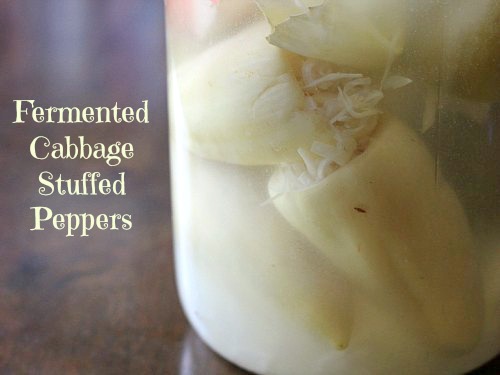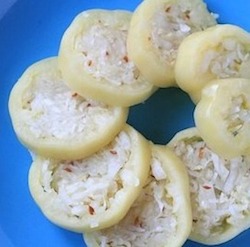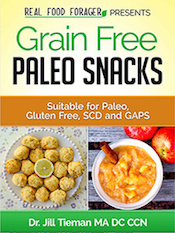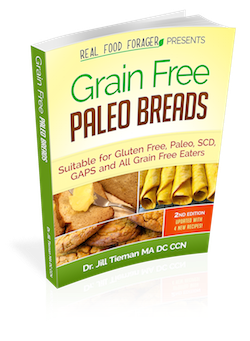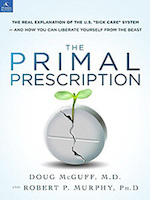My friend Naomi shares her food creations and photos of Slovakia at her blog, Almost Bananas. Check out her latest creation!
Probiotics have been in the spotlight recently. Research is continuously finding out yet another benefit that these friendly bacteria and yeast confer upon our health, be it physical or even mental.
My favorite form of probiotics are the ones that taste good. Jars sit on my counter and bubble away, a lab of strange but edible brews and experiments.
Fermenting preserved food before the advent of refrigeration, but lost popularity when the necessity to use it decreased. As we discover the health benefits of fermented foods, we also discover that ferments can taste amazing.
If you aren’t used to fermented foods, it can take a bit of an adjustment to become a fan. Fermented Red Onions are a great place to start, because they can be chopped up and added to any salad, spread or garnish without being overwhelming. Another ferment that is easy on the taste buds is Fermented Spiced Apple Chutney. Because of the sweetness of the apples and raisins it doesn’t get very sour and the seeds and/or nuts give a pleasant bite. I’ve eaten a whole quart straight from the jar – in the name of health of course.
Starting to ferment foods can be overwhelming, with lots of questions. The best is to start easy, like the red onions. It’s just sliced onions and salt, sometimes water. Another really simple ferment is cauliflower, it’s one of our family’s favorites.
After that, any fruit or vegetable is your oyster.
Each culture’s traditional way of eating is sure to include fermented foods. Influenced by my father’s Japanese heritage, foods like umeboshi (salt pickled green ‘plums’) were normal and natto (uber slimy fermented soy beans) occasionally made an appearance. My mother would often ferment greens from the garden, even radish tops, and we (or mostly my parents) would eat them with rice.
In Slovakia, where I now live, sauerkraut plays a major role in traditional cuisine, although it is often cooked like in Creamy Sauerkraut Gulash and Strapacky. My in-laws have a sauerkraut water lock crock that is almost as big as my two year old (here’s a picture on Instagram). You can buy fermented vegetables at most grocery stores here, sauerkraut, beets, cucumbers, etc, although usually they have preservatives with them. I’ve only found one brand that doesn’t. A friend recalls that as little as 30 years ago, there were crocks of fermented cucumber pickles everywhere, they were the best snack to buy. She remembers going to an outdoor swimming pool and buying fermented pickles to snack on!
This recipe for cabbage stuffed peppers is from my mother in law, and is a very common Slovak pickle. They usually eat it sliced as a condiment.
The amounts here are to fill a 3 litre jar but this is easily adaptable to smaller jars.
Fermented Cabbage Stuffed Peppers
Ingredients
25 oz/700g green cabbage
1 1/2 tsp caraway seeds
3 oz/85g (unrefined) salt
3 quarts/litres filtered water
9 smallish peppers
Equipment
Sharp knife
Large bowl
3 quart jar (or a few smaller ones)
Instructions
1. Slice the cabbage very thinly (or put through on the slicing blade of a food processor). In a large bowl, toss with 1 tbsp (25g) salt and caraway and let sit.
2. Cut tops off of peppers and take out the core and seeds.
3. Mix the remaining 2.5 tbsp (60g) of salt with 3 quarts/L of water, either filtered or boiled and cooled. Stir until salt dissolves.
4. Knead the cabbage with your hands until it is soft (but doesn’t have to have water coming from it, like with sauerkraut). Stuff peppers with cabbage, pressing firmly as you go.
5. Fill jar with stuffed peppers, pour water over top until all the peppers are submerged under the brine. It is best if you use a weight to keep the peppers below the liquid.
6. The time to ferment depends on temperature, but let ferment for about 3-5 weeks. Slice crosswise to serve.
 A Canadian transplanted to Slovakia, Naomi aims to cook real food and create an environmentally friendly and beautiful home for her family. The closest she’s come to her dream farm is growing tasty live bacteria on the counters. The simple life is an illusive ideal, that she nevertheless strives toward. Naomi shares her food creations and photos of Slovakia at Almost Bananas. She looks forward to connecting with you on Pinterest, Facebook, and Instagram.
A Canadian transplanted to Slovakia, Naomi aims to cook real food and create an environmentally friendly and beautiful home for her family. The closest she’s come to her dream farm is growing tasty live bacteria on the counters. The simple life is an illusive ideal, that she nevertheless strives toward. Naomi shares her food creations and photos of Slovakia at Almost Bananas. She looks forward to connecting with you on Pinterest, Facebook, and Instagram.

